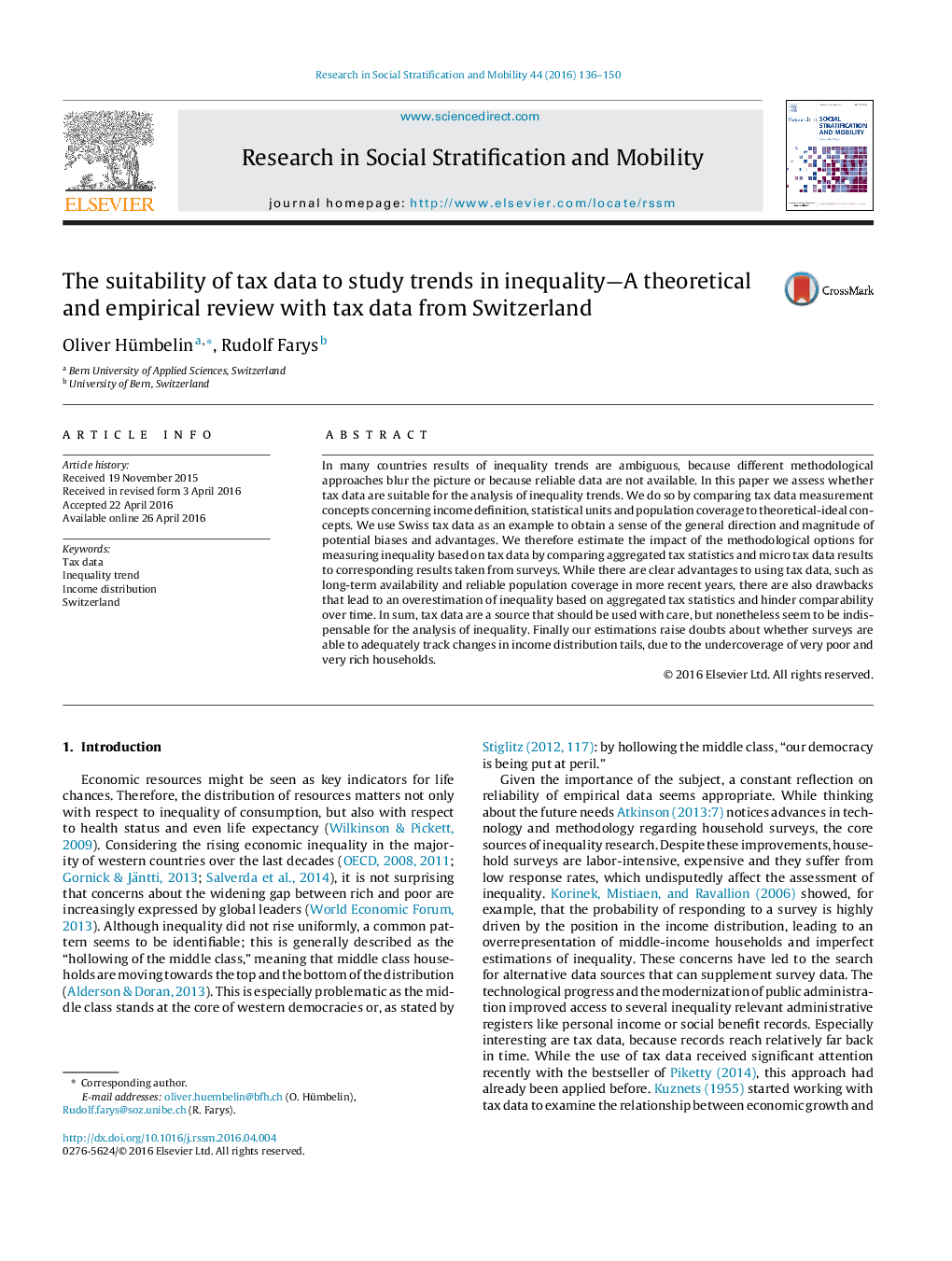| Article ID | Journal | Published Year | Pages | File Type |
|---|---|---|---|---|
| 7410009 | Research in Social Stratification and Mobility | 2016 | 15 Pages |
Abstract
In many countries results of inequality trends are ambiguous, because different methodological approaches blur the picture or because reliable data are not available. In this paper we assess whether tax data are suitable for the analysis of inequality trends. We do so by comparing tax data measurement concepts concerning income definition, statistical units and population coverage to theoretical-ideal concepts. We use Swiss tax data as an example to obtain a sense of the general direction and magnitude of potential biases and advantages. We therefore estimate the impact of the methodological options for measuring inequality based on tax data by comparing aggregated tax statistics and micro tax data results to corresponding results taken from surveys. While there are clear advantages to using tax data, such as long-term availability and reliable population coverage in more recent years, there are also drawbacks that lead to an overestimation of inequality based on aggregated tax statistics and hinder comparability over time. In sum, tax data are a source that should be used with care, but nonetheless seem to be indispensable for the analysis of inequality. Finally our estimations raise doubts about whether surveys are able to adequately track changes in income distribution tails, due to the undercoverage of very poor and very rich households.
Keywords
Related Topics
Social Sciences and Humanities
Economics, Econometrics and Finance
Economics, Econometrics and Finance (General)
Authors
Oliver Hümbelin, Rudolf Farys,
